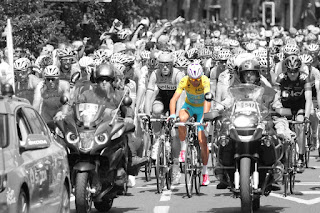The yellow jersey, also known as the "maillot jaune," is one of the most iconic symbols in the world of professional cycling and holds immense significance in the context of the Tour de France. This prestigious jersey is awarded to the cyclist who possesses the lowest overall time after completing each stage of the race. It symbolizes the leader of the general classification, which is the cumulative time ranking of all the stages.
The yellow jersey holds several layers of significance. Firstly, it signifies excellence and exceptional performance. Wearing the yellow jersey means that a cyclist has demonstrated their skill, endurance, and strategy over various terrains and challenges. It epitomizes their ability to navigate mountains, sprint through flats, and endure time trials, making it a testament to their all-around cycling prowess.
Secondly, the yellow jersey serves as a powerful visual cue for spectators and followers of the race. Its vibrant color makes the leader instantly recognizable among the peloton, enhancing the drama and excitement of the competition. Cycling enthusiasts and casual viewers alike can easily identify the current frontrunner, fostering a deeper engagement with the event.
Additionally, the yellow jersey carries a historical and cultural weight. Since its introduction in 1919, the jersey has become synonymous with the Tour de France, symbolizing its rich heritage and tradition. Cyclists who wear the yellow jersey are often celebrated as part of a storied lineage that includes legends like Eddy Merckx, Lance Armstrong, and Chris Froome.
Furthermore, the yellow jersey shapes the tactical dynamics of the race. Riders and teams strategize around protecting the jersey and vying for its ownership. This dynamic adds layers of intrigue, as teams collaborate and compete to control the race's narrative, employing tactics to gain or defend against time advantages.
In summary, the yellow jersey isn't just a piece of cycling attire; it's a symbol of excellence, a visual spectacle, a historical artifact, and a strategic element that defines the Tour de France. Its vibrant hue and the achievements it represents continue to capture the hearts and imaginations of cycling fans worldwide.
Photo: Pixabay (free)

No comments:
Post a Comment
Thanks for your comment.